MAROUN AL-RAS, LEBANON - I’m sitting in a van making funnies with security consultants, scholars and a diplomat as we bump up and down dirt roads en route to an Iran-funded family fun park. But it’s no joke. I’m the lone journalist in the group, wedged among carefully screened participants for a Middle East educational boot camp based in Beirut. We’re enjoying a shared absurdity, but our bizarre destination is no laughing matter.
We get special military clearance to drive into southern Lebanon, a region split off at the Litani River that was occupied by Israeli forces for 22 years. Our passports are scrutinized by a Lebanese Armed Forces soldier and then our van bounces into the secured zone. Taking a parallel road, we trace the so-called Blue Line that separates Lebanese territory from northern Israel. Don’t call the 119-kilometre stretch an international border — it’s merely an attempt at demarcating Israel’s line of withdrawal in 2000. In the distance, I see blue specks I’m told are barrels stamped “U.N.” in white lettering.
We pass banana groves and fields of baby watermelons, orange orchards and rows of olive trees. Pomegranates drip from branches, while bunches of brown tobacco hang drying from porch rafters. Rural villages of majority Christians or Shia Muslims enliven hilly swaths of barren land studded with jagged boulders. On the other side of a valley, we spot Israeli monitoring towers and small clusters of Israeli homes.
The Blue Line is considered one of the most dangerous boundaries in the world. The Israeli military claims that civilian-populated areas in this region are peppered with hundreds of sites weaponized by Hezbollah. Analysts of the organization — a political party with seats in parliament that’s listed as a terror entity by the Canadian government — predict the group will thrust fighters directly south into Israel during the next war. For now, the two sides maintain a fragile cessation of hostilities. We spend half-a-day navigating from the country’s United Nations’ headquarters in Naqoura to a town called Maroun al-Ras and back. A common sight along the quiet streets are billboards with faces of men the residents call “martyrs.” Many are relatives of locals who died in jihadi missions related to their cause of “holy war.” Some posters appear fresh, while others are bleached out by the sun. One generation of dead men papers over another to keep memory of loss alive.
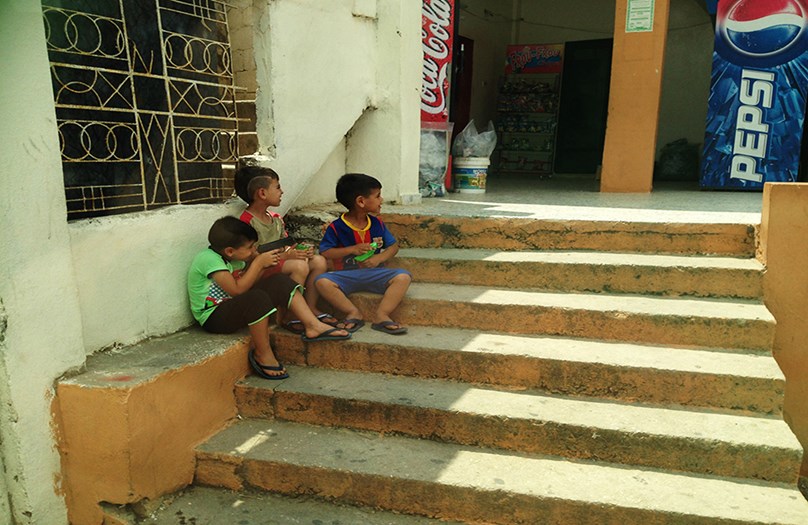
Above: Fun and games takes on a whole new meaning at Iranian theme park in Lebanon.
Villagers are amazed by our presence and try to be helpful whenever we stop for directions. We notice Google Maps clearly marks Israeli roads and landmarks in our vicinity, yet the blue cursor jumps around cluelessly, unable to pinpoint our location in Lebanon. We wind upward to our destination, marvelling at a spatter of luxury villas in various states of construction, perched on the hillside. They’ve likely been purchased with remittances sent by wealthy Lebanese diaspora in West Africa, Brazil and possibly even Canada.
It’s quiet when we reach the park gates. I emerge from the van, stretch my legs, and am soon gazing across a valley upon northern Galilee. I see neatly arranged parcels of farmland, dirt roads and settlements. That’s the geographic perspective. But from a political point of view, I see a historic panorama of bloodshed. In 1947, the United Nations drew up a Partition Plan that envisioned land for Israelis and land for Palestinians. It promised more than half that land to the former, whose population was 614,000. The Palestinians, whose population was 1.36 million, rejected the offer. But Israel declared independence, prompting the first Arab-Israeli war. When the dust settled, Israel signed an armistice with the surrounding Arab states. No Palestinian state was established.
Fast-forward to this unnerving playground named the Iran Garden, which was a gift from the Iranian government as a goodwill gesture. It sits atop a hill overlooking Israel and features a massive banner that ominously proclaims in Arabic: “Jerusalem we’re coming!” Iran’s former president, Mahmoud Ahmadinejad, dedicated the park during a visit in 2010 to honour the village’s local “martyrs.” Construction began in 2006, not long after the close of the 34-day July war. The village was devastated during several days of fierce fighting.
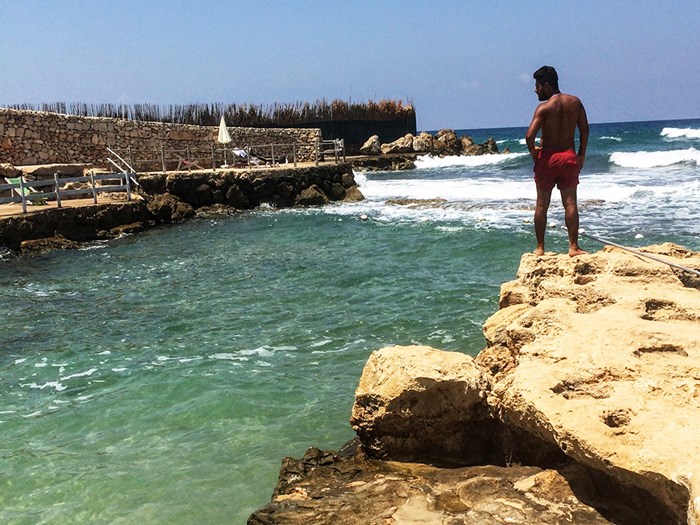
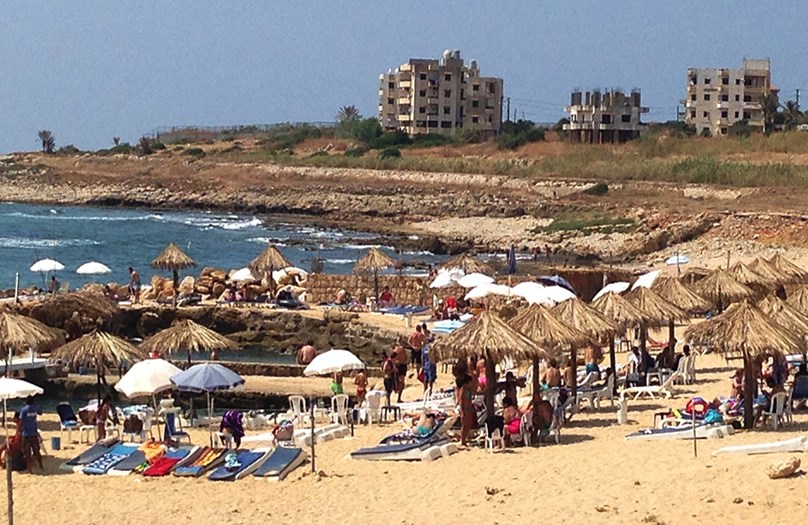
Left: The beaches of Lebanon are some of the best in the world. Right: Lebanese flock to the beach every day.
The park is blatantly ideological. Children scramble up towers and run across connecting rope bridges for faux-military exercises. In between, the youngsters can hop on carnival-style mechanical cars and animals. Paintball is offered for slightly older kids. The grounds also feature thatched-roof cabanas, named after different Iranian cities, and a replica of the most revered Islamic site in Jerusalem — the Dome of the Rock.
Experts in our group explain that Iran has adopted the “Palestinian Question in Lebanon,” perhaps as an anti-Western overture, more than anything. The Islamic Republic is majority Shia Muslim, while Palestinians are typically Sunni Muslim. Membership in Hezbollah is also vastly Shia; the organization takes its highest instructions — and vicious goal of eliminating Israel — from Iran’s Supreme Leader. Just as martyr posters adorn streets throughout numerous villages in Lebanon’s south, so too flies the bold yellow and green Hezbollah flag. A banner with the group’s logo, mounted near the Iran Garden’s front gates, flaps in the wind to apparently welcome jihadist families to a nice day off.
The Iran Garden is just one of the many complex faces of Lebanon. A few days later we set off on another excursion, also toward an notorious destination, but this time driving north. The mood is markedly different in Tripoli. Laughing women in high heels, some wearing sparkling headscarves — just as many not — stroll the streets in late afternoon on the Saturday of Eid al-Fitr. Scan the headlines beamed back to Canada and one impression you might form is this place is a constant war zone. Not so from what I see and hear on our brief visit.
Families with gaggles of children nosh at a Pizza Hut bearing its name in both English and Arabic. A man stands amidst a traffic circle clutching a bouquet of red roses. Sidewalks lined by walls of colourful murals proclaim, “Hope, love, no bulits.” It’s a lovely day and people are celebrating the end of Ramadan. Which isn’t to say Tripoli doesn’t attract a unique brand of trouble.
The country’s second-largest city tallies something like 10 shootings a week — mostly interpersonal disputes stemming from traffic incidents, I’m told by one of the security consultants. Peg it perhaps to the city’s history of fighting and relatively easy access to guns.
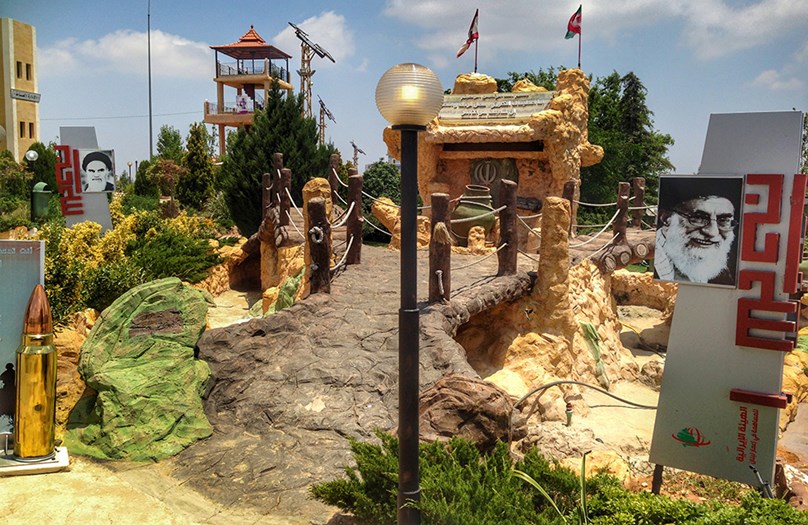
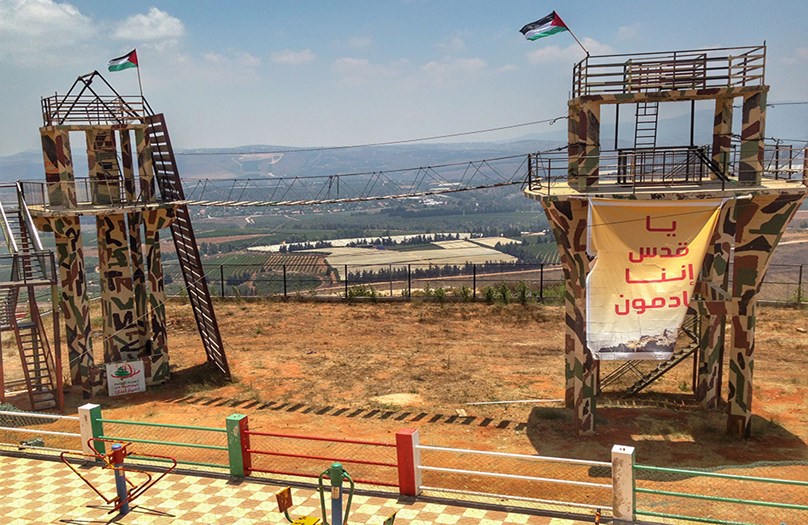
Left: Iranian theme park was a gift to the people of Lebanon. Right: Theme park looks more like a detention camp.
At the time of my visit, the last major clash was in October 2014. For three intense days, a couple hundred people among a 900,000 predominantly Sunni Muslim population battled the Lebanese Army under an Al-Qaeda-affiliated banner. But my hosts tell me that extremists comprise only a fraction of the city’s vastly moderate society. City dwellers are not fighters, I’m told. They may appreciate Islamist slogans, “but they hate extremism.”
So how dangerous is this place, actually? In a previous era the political elite shielded themselves in armoured cars, while residents faced fewer threats. But spillover from Syria’s civil war has destabilized Lebanon’s north over the past five years. Fortunately, things are quiet as of my visit. One long-time resident estimates it’s been 40 years since a foreigner like me was killed here.
He said a female friend of his daughter — also tall and blond – visited a few months earlier. They’d go out together and everything was peachy. Individuals have a higher chance of getting attacked in Baltimore or Chicago, I’m told. It’s more a situation of being in the “wrong-place, wrong-time.”
The discussion is exactly nuanced, but there’s some consensus life is flowing with relative normalcy. A “yellow hair” like me apparently need not fret.
About the Author
Tamsyn Burgmann is a career chronicler of other people’s lives. But a twist in the reporter’s plot catapulted her into a whirlwind solo journey through 12 Asian countries over nine months. She rode motorbikes with Muay Thai fighters, ingratiated herself with rebels in Burma and was body painted for a travel exhibition in Manila. Burgmann discovered she had her own story to write. She has since gone diving with sharks off Micronesia’s Palau and gained the trust of a Beirut artist who secretly paints humorous characters on bombed out buildings. She is indebted to folks across the globe who have courageously shared their worlds and, in turn, ignited hers.